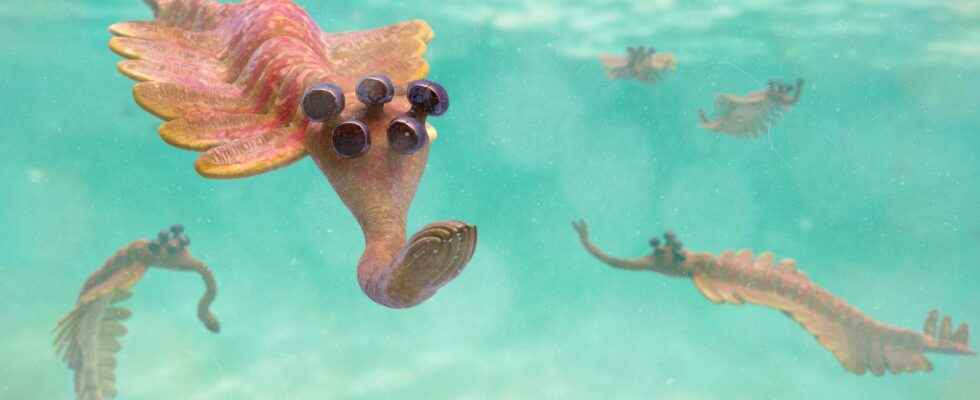A fossil species previously thought to be a radiodont, a Cambrian nektonic predator, has just been reanalyzed. Its morphology allows paleontologists to classify it among the opabiniids, the last specimen of which was discovered more than a century ago.
You will also be interested
[EN VIDÉO] The oldest turtle fossils Polish researchers have formalized the discovery of the oldest turtle fossils, dating back 215 million years.
A species fossil having a name necessarily well known? If the question arises, the following answer is certainly no. Some species that have now disappeared are, for example, ichnospecies, that is to say species defined not by their remains but by the traces they have left behind. These may be burrows, footprints generated by locomotion or coprolites which are faeces fossilized. The classification phylogenetic other groups also remains uncertain, this is particularly the case of the conodonts which are vermiform aquatic organisms and for which the membership of the clade vertebrates is still debated.
The group of opabiniidae included, until recently, only one species named Opabinia regalis
This group is not the only one whose classification raises questions among paleontologists, this is indeed also the case for the opabiniidae group. This group ofeuarthropods (myriapods, chelicerates and pancrustaceans, including insects) included, until recently, only one species named Opabinia regaliswho owned five stalked eyes and one proboscis. This species has been identified in Burgess Shale located in Yoho National Park in Canada. Those shales are dated to the Cambrian, 508 million years ago and have been discovered, as well as the wildlife fossil who was there in 1909.
Towards segmentation and appendages?
The authors of a new study published in the journal Proceedings of the Royal Society B: Biological Sciences reevaluate the description of a fossil specimen previously classified alongsideAnomalocarisfrom radiodonts anomalocarididae. This fossil comes from the Drumian Wheeler formation in Utah and dates from the Cambrian and more precisely from the Drumian (between 500.5 and 504.5 million years ago).
This species is named Utaurora comosa by the authors, with reference to the US state from which it originates. The term ” aurora is inspired by the name of the Roman goddess of the dawn who transformed her lover into a cicada, a euarthropod. U. comosa is now classified by the authors among the opabiniids, in particular because of the presence of its proboscis.
The revision of the phylogenetic classification of this species is important because it is the second species classified among the opabiniids, which is the first group to present a backward-facing mouth. Moreover, the dorsal furrows presented by these organisms (13 to 15 segments in U. comosa and 15 at O. regalis) are thought to be precursors to complete body segmentation, while lateral extensions used for swimming would be precursors to appendages.
Interested in what you just read?
